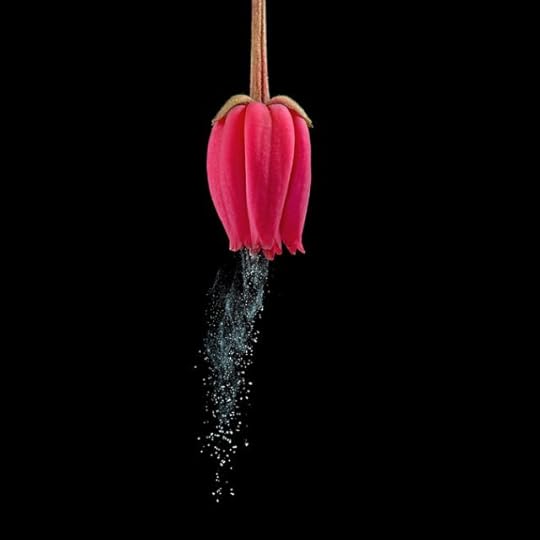Watching Their Dust: Photographing Players in Pollination
This content was originally published by RACHEL NUWER on 24 April 2017 | 8:26 pm.
Source link
Spend just a few minutes in a garden this time of year, and you will likely see a pollinator buzzing or fluttering from flower to flower. While most of us are aware of this vitally important ecosystem service, the act itself — the transfer of pollen from stamen to stigma via tiny feet, wings, antennas or mouthparts — is largely unseen.
In “Pollination Power,” Heather Angel, a photographer based in Surrey, England, exposes the process in macrophotography, which stands out not only for its range and aesthetics, but also for its scientific exactness: She was determined to show not just creatures in flowers, but the instant release of pollen itself.
Photo
Credit
Heather Angel
Photo
 Topside view of a spider flower, top, and a photomicrograph of the planktonic freshwater alga Volvox.
Topside view of a spider flower, top, and a photomicrograph of the planktonic freshwater alga Volvox.Credit
Heather Angel
Ms. Angel’s pursuits took her to 20 countries, from Kazakhstan to Costa Rica, though some of her most productive trips were closer to home: to her own backyard and to the Royal Botanic Gardens at Kew, in London.
The diversity of plants she captured is equaled only by the diversity of pollinators. “Bees get all the publicity, but there are so many other insects and animals that are important pollinators,” she said. While her photographs include bees and butterflies galore, they also spotlight more unlikely players: hoverflies, scarab beetles, day geckos and blue tits.
Technical expertise made many of the images possible. Ms. Angel used an ultraviolet flash to expose the brilliant petal patterns and fluorescing nectar that many flowers produce for the benefit of their pollinators, normally invisible to the human eye. A red light allowed her to photograph nocturnal moth pollinators.
Photo

Credit
Heather Angel
Photo
 Mechanical vibration of a snowdrop, top, and a honeybee on the open bud of an evening primrose.
Mechanical vibration of a snowdrop, top, and a honeybee on the open bud of an evening primrose.Credit
Heather Angel
Plants are not passive players in pollination, and Ms. Angel paid special attention to their role in taking care of business.
Some flowers change color when pollination is complete, signaling to would-be visitors that they should move on to freshly opened blooms. Others open and close to control the timing of the act. All provide some form of enticement for pollinators: sugary nectar, pollen, a place to find a mate or even shelter from the elements.
Photo

Credit
Heather Angel
Photo
 A high-speed flash freezes the pollen release from the anther pores of a Chilean bellflower, above, and a male hazel catkins releases its pollen clouds from leafless branches. The tiny red structure on the same branch is the erect female flower, which is wind pollinated.
A high-speed flash freezes the pollen release from the anther pores of a Chilean bellflower, above, and a male hazel catkins releases its pollen clouds from leafless branches. The tiny red structure on the same branch is the erect female flower, which is wind pollinated.Credit
Heather Angel
“Sometimes you see up to five solitary male bees sleeping in a flower,” Ms. Angel said.
Continue reading the main story
The post Watching Their Dust: Photographing Players in Pollination appeared first on Art of Conversation.



